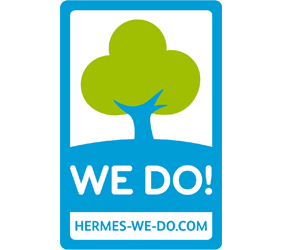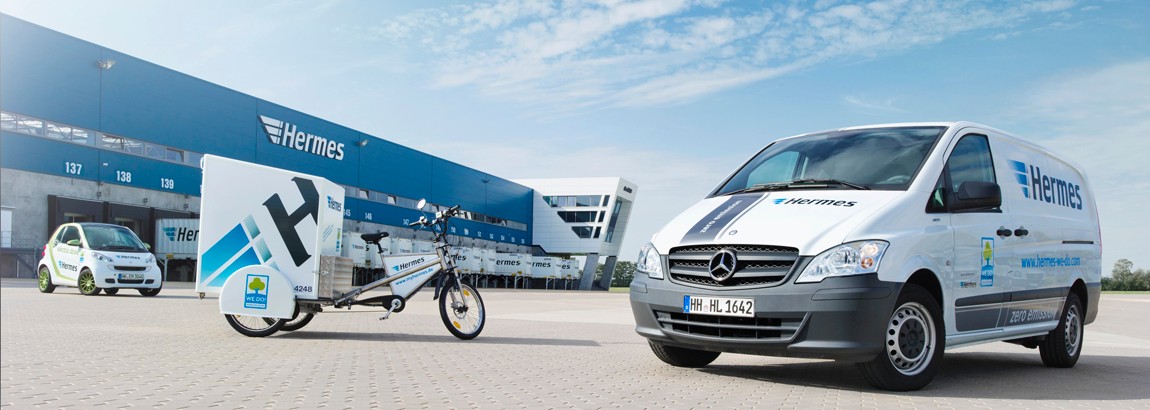Doing the right thing: The Hermes sustainability programme "WE DO!"

Our sincerity and dedication to this position is proven by our 16 years of ISO 14001 certification, the international environmental standard that mandates continual improvement. Whether it is through our use of recycled paper, the principle that Hermes ParcelShops should be within walking distance, our solar-powered facilities or our increasingly electric vehicle fleet, Hermes' clearly defined goal is to significantly reduce CO2 emissions by 2020. We intend to make reductions of at least 50 percent at our facilities and 30 percent in distribution. "We set binding goals and ensure transparency during implementation", says Frank Rausch, CEO Of Hermes Germany (HG), who as CEO is also responsible for the topic of sustainability, "and subject ourselves to external testing by experts”.
Thus, in 2010 a comprehensive, far-reaching corporate initiative was launched under the name “Hermes - WE DO!”. The climate change and environmental programme, unique in the industry, comprehensively bundles the efficient use of resources across all of the various company divisions. All areas of the company are involved and it takes both upstream and downstream steps in the logistics chain into account.Its core element is a CO2 master plan that specifies all current environmental protection activities, as well as those planned for the future.Every year, transport-related CO2 emissions are to be reduced by two percent and facility-related emissions should be reduced by 3.5 percent. Furthermore, Hermes provides regular information to its clients about the emissions that been generated by shipping through Hermes in the form of a free CO2 report. Hermes then uses this information as both an invitation and as leverage to work together with the client to permanently reduce these emissions.
The following examples, some of which focus on details, some of which look at the big picture, show how sustainably Hermes is on the go.
The Hermes facilities example
A lot can be done not only to reduce emissions caused by transport, but to reduce those attributable to facilities as well. Hermes has just over 70 locations throughout Germany. When constructing new buildings, innovative heating, lighting and insulation technology are already taken into account in the planning stages. Generating heat with biomass not only saves 100 percent of the CO2 emissions, but also one third of the operating costs. As a result of the positive experiences with this approach so far, existing buildings are now being successively retrofitted with such systems. Furthermore, the Langenhagen HUB, which is equipped with solar power, was the first property to receive a silver seal of approval from German Sustainable Building Council (DGNB) - since then, four locations have been similarly certified.
The Hermes fleet example
The Hermes fleet is made up of about 1,500 vehicles. Constantly updated, it generally fulfils Euro 4 and 5 standards. In addition, Hermes is also successfully participating in tests of alternative drives. The largest electrically-powered vehicle fleet in any European city has been in operation since winter 2014: Using 44 electric prototypes, Hermes has been delivering packages to customers in London 100-percent emissions free.
The uniforms example
Since 2013, HG has been a partner in the “Cotton made in Africa” (CmiA) initiative, equipping its 13,000 delivery persons in Germany with uniforms made from cotton grown in an environmentally and socially responsible way. In this way, Hermes and CmiA support about 475,000 cotton farmers who grow this raw material on sustainable farms.
The biodiversity example
For some time, the media have been reporting about the massive die-off of bee colonies around the world. By placing hives of the honey-producing insects on the roof of the Haldensleben shipping centre, Hermes has ensured the survival of four hives. Homes made of wood, straw and mud for bumblebees, wasps and wild bees on the roof of the Hannover-Langenhagen HUB are another step being taken to help preserve biodiversity.
